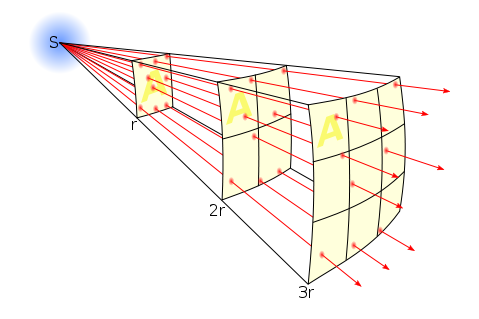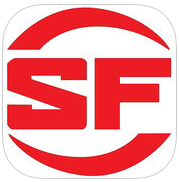The Surefire FirePak: A Smartphone Science Studio Lighting Solution
By Martin Horejsi
Posted on 2017-02-13
As smartphone cameras take on an ever-more sophisticated role in the science classroom, the technical limits of phone photography become more apparent. Luckily, a dose of strong light can overcome many problems as well as provide access to a world unseen by the human eye. But not just any light will work. The amount, color, and frequency modulation of the light all play important roles in scientific photography.

The proper amount of light is a double-edge light saber. Many LED light sources change the brightness by blinking the LED very fast. Unfortunately that blinking can be detected by the camera and shows up in video as flickering lights or dark bars moving across the screen. And the effect is even more pronounced when the slow motion option is engaged. An excellent solution for just such lighting problems is now available with the Surefire FirePak.
Photons from a Phirehose
Surefire is well known as the maker of some of the world’s best flashlights, but recently they have let some of their lighting magic seep into the world of smartphones. With Surefire’s new “FirePak Smartphone Video Illuminator + Charger” lighting system, two troublesome areas of cell phone photography and video capture are solved with one powerful device. By blasting up to 1500 lumens of light onto a subject, the very fast or the very dark are now fair game for the camera. 1500 lumens is about the same as a focused 100 watt light bulb!

Leveraging the sophisticated camera and image processing power of a student’s smartphone can open even more windows into the the high speed, very small, and of course, nighttime and dark worlds you might want to capture. In fact, until you use such a light that is both powerful in output and features, it’s hard to appreciate all the limitations of even the most modern smartphone cameras.
The FirePak is designed for the phone camera and is billed as a mobile lighting solution and device charger. The lightly rectangular block named the FirePak contains a large rechargeable battery, two USB ports (one for charging itself, one for charging other devices), a sliding multi-position switch, a battery indicator light, and two unique LED lights.

What’s unusual about the pair of LED lights is they have asymmetrical 10mm reflectors with one offset in one direction and the other offset 180 degrees. This combination of lights produces full-frame illumination specifically designed for a smartphone’s 16:9 HD aspect ratio. In other words, the FirePak lights up a rough rectangle that is proportioned to what the cell phone camera sees. No wasted light, no dark spots or vignetting.
Schooled
Proper exposure is a combination of three things: shutter speed, lens aperture, and light sensitivity. In the case of slo-mo, the shutter time is very short and the light sensitivity of the camera chip is fixed and depends on the quality of the smartphone. So too is the aperture of the camera’s lens. The solution is to pour more light on the subject to give the camera more to work with in terms of focus and exposure, and make it easier to clearly freeze each frame.

The Surefire FirePak has a six position switch, off—on (but no-light)—low—med low—med high—high. When “on but no-light” is selected, the light output can be controlled by a companion App from up to 10 meters away (which has its own set of advantages). In the video below, the FirePak is cycled from “off” through “high” and back to “off.” It was not mounted on a smartphone, which is why the light was moving relative to the camera’s view.
The runtime for the FirePak on high output is about five hours with a slowly diminishing brightness. You might get about one and a half complete iPhone recharges if the FirePak’s battery is used only for that purpose. And running on the lowest light output of 100 lumens, the FirePak should give about 10 hours of useful light off a full starting charge. Obviously there are many combinations of the above, but you can always head off to school with a full charge if you plug the FirePak into a wall outlet or computer overnight. And you can even charge the Firepak with a traditional external recharging cell phone battery. However, FirePak has a healthy appetite, which is why it has its own large battery, so don’t expect to pull a full charge out of a similar sized backup battery.
Don’t Blink
Another important feature of the Surefire FirePak, and arguably the most impressive, is that the LEDs are modulated at a frequency faster what the smartphone camera uses, even with slow motion. Lesser lights blink on and off rapidly to simulate a dimmer output. But that blinking can be seen by the smartphone camera and appears as flashing or dark lines on the captured video. During higher speed video capture (that produces so-called slo-mo results) the effects are even more pronounced. In the past, our lower-powered incandescent lights produced a constant photon output even when dimmed. In fact it was the electric current of 60 cycles of AC current (in America) that produced blinks and flashes rather than the dimming.
Although taking pictures and video at night or in a dark environment might seem the obvious use for the FirePak, the lighting of subjects that will be recorded in slow motion is truly a win for the FirePak. For a camera to capture video that plays back in slo-mo, it must capture two, three, four, or more frames in the time it normally takes to capture one. So, half-speed slo-mo is about 60 frames per second or twice the normal 30 FPS. Quarter speed playback, meaning one second of real time is shown over four seconds, would take 120 FPS. And the iPhone’s slo-mo is 240 frames per second, or eight times normal. And some other Apps claim up to 1,000 frames per second. With all that speed comes the need for lots of light.
The Surefire FirePak produces a bright stream of light that can easily reach out 20 meters or more when needed, or shine a spotlight on a local scene making closer subject stand out from the background. The low setting of the variable output FirePak is still fairly bright so for closeup photography and video so it may be necessary to hold the FirePak further away from the scene, even if just centimeters. Light output is affected by the inverse square law meaning that the light’s intensity is inversely proportional to the square of the distance from the source. So even a little increase in subject-light distance has a noticeable effect.

The Case in Point
The FirePak is designed to be mounted to the smartphone using a slide-on docking attachment system that begins with a custom Surefire phone case. The dual-rail yoke on the back of the FirePak slides into a pair of slots on the back of the svelte phone case Surefire makes. It’s mostly held in pace by friction, but there is a stopping block that locks the sliding. No buttons or release levers are required to attach or detach the camera from the case.

The FirePak is reversible on the phone case, and I’ve found that when imaging close objects such as those within 20 cm from the lens, the output reflectors on the FirePak might need to be close to the lens to reduce shadows. For everything else, the FirePak can be used with reflectors up or down. For off-phone use, I think a tripod socket on the FirePak would be helpful, or an after-market tripod attachment that uses the same rails as the smartphone case.
At about 38 seconds into the Surefire promotional video below, you can see the blinking from a modulated light source on the curtain in the right of the frame, just before the FirePak overwhelmed the scene with flicker-free lighting.
In the video above, I had to study how Surefire was using the FirePak on a stand during the filming, as the FirePak was the actual lighting source for the video. Surefire was using a clamp to hold the FirePak. I had hoped to repurpose one of my iPod/iPhone tripod clamps, but alas, the FirePak is too narrow to seat in a traditional-sized iPhone clamp. However, being a photographer in a former life, I did have plenty of Bogen/Manfrotto clamps and arms for studio work, as well as tripods. Using a similar solution to Surefire’s video, I was able to position and adjust the FirePak for all smartphone photography and video-shooting situations I could create. Of course, duct tape would also work. And it is with this off-camera lighting that the Bluetooth App control of the FirePak really shines!

There’s an App for that.
The Surefire FirePak will sell for about $200, and the companion app called the Surefire FirePak Illuminator can be downloaded for free onto your Apple or Android phone. The App can talk to the FirePak via Bluetooth allowing some on-screen light control and customization. Additional features of the App include grid overlays for photo composition, tools for white balance, a self-timer, output levels, and exposure brightness (ISO). 

It is clear that the trend of student smartphones is not really a trend anymore. It is the new normal. And with all paradigm shifts in capabilities, we teachers should make sure there is plenty of room in our expectations to address and even assess what might have been impossible last semester.
Disclaimer: The views expressed in this blog post are those of the author(s) and do not necessarily reflect the official position of the National Science Teaching Association (NSTA).


